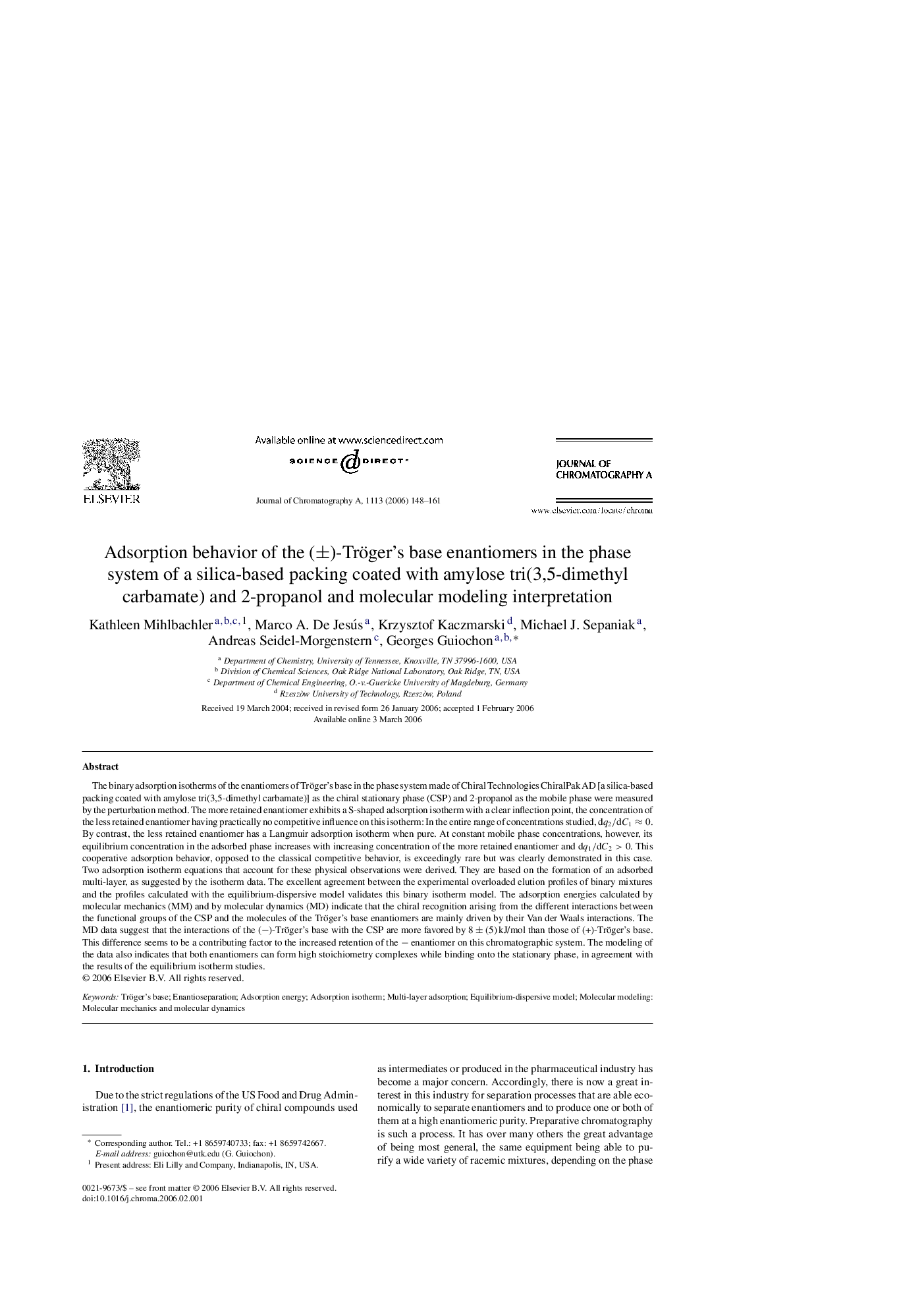| کد مقاله | کد نشریه | سال انتشار | مقاله انگلیسی | نسخه تمام متن |
|---|---|---|---|---|
| 1211560 | 1493771 | 2006 | 14 صفحه PDF | دانلود رایگان |
عنوان انگلیسی مقاله ISI
Adsorption behavior of the (±)-Tröger's base enantiomers in the phase system of a silica-based packing coated with amylose tri(3,5-dimethyl carbamate) and 2-propanol and molecular modeling interpretation
دانلود مقاله + سفارش ترجمه
دانلود مقاله ISI انگلیسی
رایگان برای ایرانیان
کلمات کلیدی
موضوعات مرتبط
مهندسی و علوم پایه
شیمی
شیمی آنالیزی یا شیمی تجزیه
پیش نمایش صفحه اول مقاله

چکیده انگلیسی
The binary adsorption isotherms of the enantiomers of Tröger's base in the phase system made of Chiral Technologies ChiralPak AD [a silica-based packing coated with amylose tri(3,5-dimethyl carbamate)] as the chiral stationary phase (CSP) and 2-propanol as the mobile phase were measured by the perturbation method. The more retained enantiomer exhibits a S-shaped adsorption isotherm with a clear inflection point, the concentration of the less retained enantiomer having practically no competitive influence on this isotherm: In the entire range of concentrations studied, dq2/dC1â0. By contrast, the less retained enantiomer has a Langmuir adsorption isotherm when pure. At constant mobile phase concentrations, however, its equilibrium concentration in the adsorbed phase increases with increasing concentration of the more retained enantiomer and dq1/dC2>0. This cooperative adsorption behavior, opposed to the classical competitive behavior, is exceedingly rare but was clearly demonstrated in this case. Two adsorption isotherm equations that account for these physical observations were derived. They are based on the formation of an adsorbed multi-layer, as suggested by the isotherm data. The excellent agreement between the experimental overloaded elution profiles of binary mixtures and the profiles calculated with the equilibrium-dispersive model validates this binary isotherm model. The adsorption energies calculated by molecular mechanics (MM) and by molecular dynamics (MD) indicate that the chiral recognition arising from the different interactions between the functional groups of the CSP and the molecules of the Tröger's base enantiomers are mainly driven by their Van der Waals interactions. The MD data suggest that the interactions of the (â)-Tröger's base with the CSP are more favored by 8±(5) âkJ/mol than those of (+)-Tröger's base. This difference seems to be a contributing factor to the increased retention of the â enantiomer on this chromatographic system. The modeling of the data also indicates that both enantiomers can form high stoichiometry complexes while binding onto the stationary phase, in agreement with the results of the equilibrium isotherm studies.
ناشر
Database: Elsevier - ScienceDirect (ساینس دایرکت)
Journal: Journal of Chromatography A - Volume 1113, Issues 1â2, 28 April 2006, Pages 148-161
Journal: Journal of Chromatography A - Volume 1113, Issues 1â2, 28 April 2006, Pages 148-161
نویسندگان
Kathleen Mihlbachler, Marco A. De Jesús, Krzysztof Kaczmarski, Michael J. Sepaniak, Andreas Seidel-Morgenstern, Georges Guiochon,